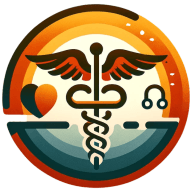What Are the Challenges in Healthcare Compliance?
Imagine navigating the complex maze of healthcare compliance with guidance directly from a CEO and a medical director. The first insight highlights the importance of prioritizing continuous education and cybersecurity. With a total of seven expert insights on tackling various compliance challenges, the discussion wraps up with the promotion of innovation while ensuring compliance. These industry perspectives provide actionable steps and foresight needed in today's evolving healthcare landscape.
- Prioritize Continuous Education and Cybersecurity
- Conduct Privacy-Risk Analysis and Implement Controls
- Balance Patient Care and Data Security
- Navigate Legal and Ethical Technology Challenges
- Encourage Investment in Compliance Resources
- Adapt to Evolving Patient Privacy Expectations
- Promote Innovation While Ensuring Compliance
Prioritize Continuous Education and Cybersecurity
One significant challenge I’ve observed in healthcare compliance is the complexity of staying updated with constantly changing regulations, especially around data privacy and patient confidentiality. With the increasing use of digital health records and telemedicine, maintaining compliance with HIPAA regulations is more critical—and more challenging—than ever. To address this, healthcare leaders must prioritize continuous education and training for their staff, ensuring that everyone is familiar with the latest regulatory updates. Another essential step is investing in robust cybersecurity systems to protect patient data, while also regularly auditing compliance processes to identify gaps early. Establishing a culture of accountability and transparency within the organization can help make sure that compliance is a top priority across all departments.

Conduct Privacy-Risk Analysis and Implement Controls
As the CEO of Riveraxe LLC, I've seen many compliance challenges in healthcare IT. A major hospital client struggled with HIPAA compliance after implementing a new patient portal. To address this, we conducted a privacy-risk analysis, identified vulnerabilities, and implemented corrective actions like mandatory privacy training for all staff and role-based access controls.
At another client, we found inconsistent version control and change-management processes for their EHR system. By mapping their software development life cycle, we developed standard operating procedures to ensure all changes were properly documented, tested, and approved before implementation. This reduced compliance risks and improved system stability.
Healthcare organizations often lack visibility into how patient data is accessed and used. At one client, we deployed an audit system to monitor access in real-time, enabling faster responses to inappropriate access. Regular reviews of audit logs and access reports help clients tighten controls and take corrective action when needed.
With massive amounts of patient data, healthcare IT demands a proactive approach to compliance. Solutions must be built securely by design, with privacy and security controls embedded from the start. Continuous assessment, monitoring, and adaptation are key. Non-compliance means loss of patient trust and hefty penalties. With the right strategy and solutions, healthcare IT can leverage data to improve care delivery while upholding privacy.
Balance Patient Care and Data Security
Striking a balance between patient care and data security can prove to be an ongoing struggle. Healthcare providers need to ensure that sensitive patient information is kept safe from breaches while still delivering high-quality care. Privacy laws demand strict measures, which can sometimes slow down medical processes.
This stress impacts not just administrators but also the healthcare providers on the front lines. Patients also feel the effects, as they may experience delays or barriers in their care. Find ways to support systems that prioritize both security and efficiency.
Navigate Legal and Ethical Technology Challenges
Integrating new technologies while maintaining compliance adds layers of complexity to the healthcare field. Emerging tools like AI and electronic health records offer great benefits but bring their own sets of regulatory challenges. Healthcare providers must navigate these technologies' legal and ethical ramifications without falling behind on compliance.
It requires ongoing training and adaptation, which places strain on resources and time. Despite these hurdles, staying updated with technology is crucial. Advocate for better training programs to ease these transitions.
Encourage Investment in Compliance Resources
Limited resources often hinder comprehensive compliance efforts in the healthcare sector. Smaller facilities and clinics may lack the financial and human capital to effectively manage compliance-related tasks. This can lead to gaps in staff training, outdated compliance protocols, and eventually, higher risks of non-compliance.
Efforts to comply can sometimes seem overwhelming, leaving less time for actual patient care. Encouraging investment in compliance resources is essential for improving healthcare outcomes. Push for policy changes that allocate more funding to healthcare compliance.
Adapt to Evolving Patient Privacy Expectations
Keeping up with evolving patient privacy expectations is a continual challenge for healthcare providers. As patients become more aware of their rights, they demand better control over their personal information. Meeting these heightened expectations requires constant revision of privacy policies and practices, which can become cumbersome.
The task involves understanding and interpreting changing laws and balancing them with operational needs. Healthcare organizations must stay nimble to adapt swiftly to these changes. Support initiatives that promote patient education and rights awareness.
Promote Innovation While Ensuring Compliance
Proving compliance without stifling innovation is a delicate balance in the healthcare industry. On one hand, rigid regulations are essential to ensure patient safety and data protection. On the other hand, overly stringent rules can hinder the adoption of cutting-edge medical technologies and practices.
Healthcare organizations struggle to innovate while ensuring they meet all regulatory requirements. This balancing act often involves significant planning and resource allocation to achieve both compliance and innovation. Promote policies that encourage both innovation and rigorous compliance in healthcare.


